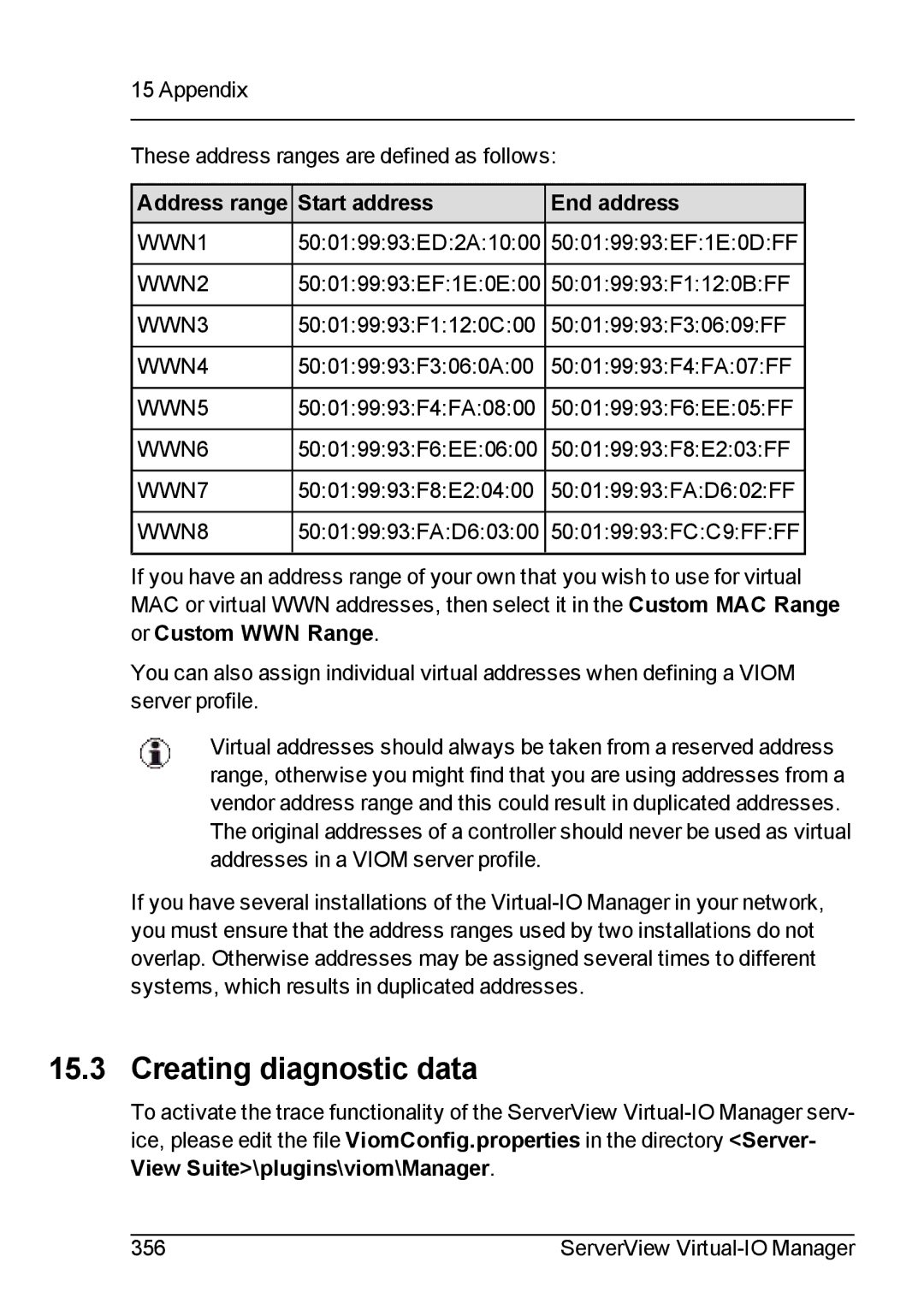
15 Appendix
These address ranges are defined as follows:
Address range Start address | End address | |
WWN1 | 50:01:99:93:ED:2A:10:00 | 50:01:99:93:EF:1E:0D:FF |
WWN2 | 50:01:99:93:EF:1E:0E:00 | 50:01:99:93:F1:12:0B:FF |
WWN3 | 50:01:99:93:F1:12:0C:00 | 50:01:99:93:F3:06:09:FF |
WWN4 | 50:01:99:93:F3:06:0A:00 | 50:01:99:93:F4:FA:07:FF |
WWN5 | 50:01:99:93:F4:FA:08:00 | 50:01:99:93:F6:EE:05:FF |
WWN6 | 50:01:99:93:F6:EE:06:00 | 50:01:99:93:F8:E2:03:FF |
WWN7 | 50:01:99:93:F8:E2:04:00 | 50:01:99:93:FA:D6:02:FF |
WWN8 | 50:01:99:93:FA:D6:03:00 | 50:01:99:93:FC:C9:FF:FF |
If you have an address range of your own that you wish to use for virtual MAC or virtual WWN addresses, then select it in the Custom MAC Range or Custom WWN Range.
You can also assign individual virtual addresses when defining a VIOM server profile.
Virtual addresses should always be taken from a reserved address range, otherwise you might find that you are using addresses from a vendor address range and this could result in duplicated addresses. The original addresses of a controller should never be used as virtual addresses in a VIOM server profile.
If you have several installations of the
15.3 Creating diagnostic data
To activate the trace functionality of the ServerView
View Suite>\plugins\viom\Manager.
356 | ServerView |
